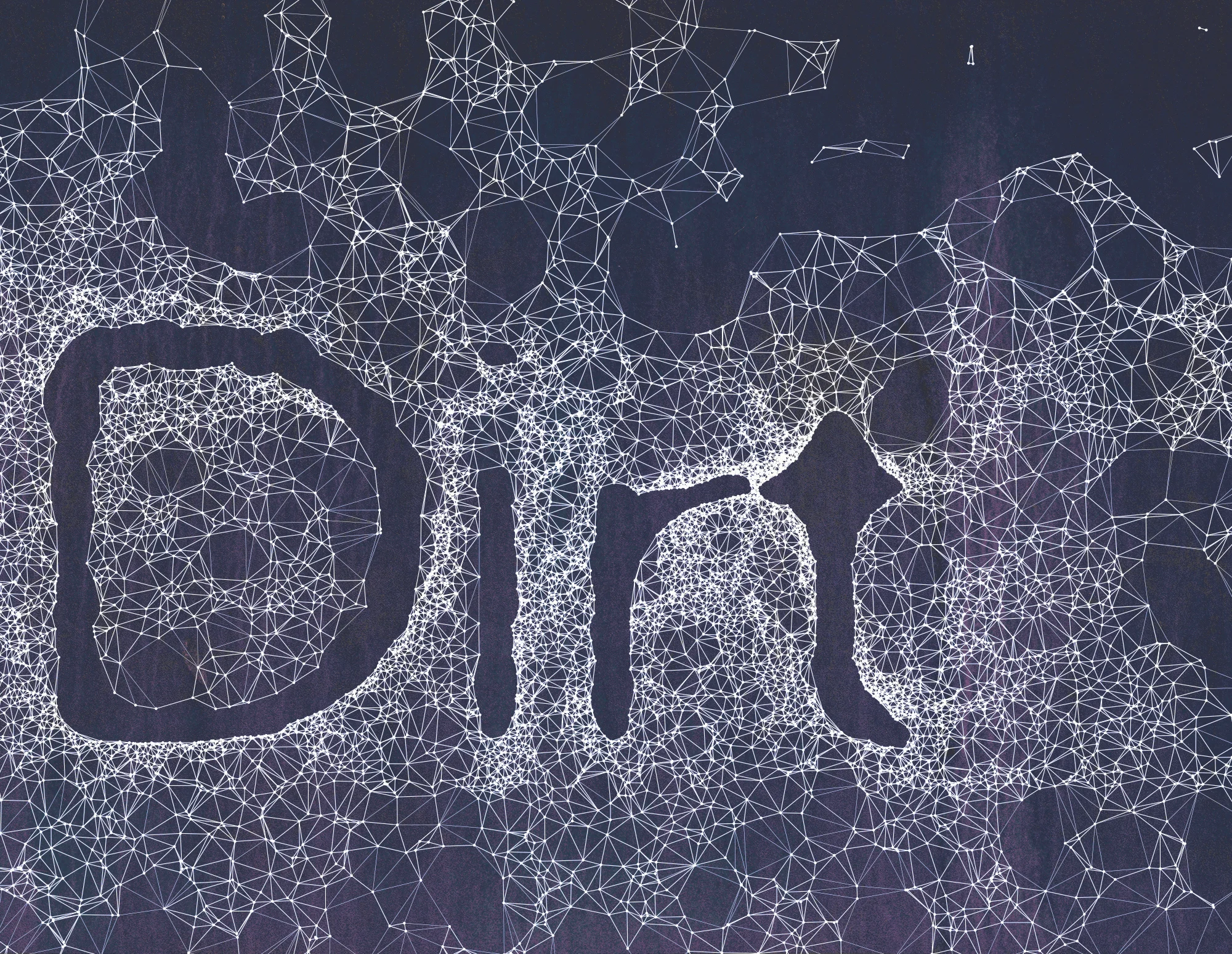I have always thought of designing the look and feel of the book as a bit of a bipolar endeavor. Content wise, the book is very diverse. We think of dirt as a subversive form of communication, as a course in which cities are developed, as an iterative method of production, as elements or raw ideas, and finally, the most familiar interpretation of all: dirt as a fertile and tangible medium. The five distinct topics, each have their own set of visual and visceral associations. The challenge is to find a cohesive way to present these graphical affiliations for each chapter in a unifying fashion.
How does one tackle that? Finding a design language that can serve as a master framework for all 5 chapters? With a neutral, non-interpretive, clinical font like Helvetica? No. Instead, we celebrated the polarities. Essentially finding subtle ways to subvert traditional book designs. We first try to understand it, then dirty it up. We wanted it to look familiar but just doesn’t look quite right. So, we cultivate the jolie-laide {Jolly Led}, the ugly-beautiful lady, the point of tension, a balanced imbalance.
Susannah Brewster with Lisa Schwert, Book Cover of "Dirt" (2012).
Lily Jencks, An Ornament of Sustainability (2008).
You will notice that we used Garamond, an old French font from the 1500s, then juxtapose Garamond with a san-serif font—variation of Helvetica with rounded corners. The round corners are supposed to resemble a worn out metal type from yesteryear. You may notice that we have lots of hanging punctuations in paragraphs. Punctuations that are thrown out of the column grid is something you don’t often see in the age of inDesign and digital tablet publication. It’s very subtle, but the mechanical and intentional imperfection is enough to drive my fellow editor Phillip crazy. You will notice that our tessellated cover looks a bit like a sand formation that verging on complete entropy or you can think of it at it as snap shot of constellations in the evening sky. And lastly, you notice that our logo. You can think of our logo as emerging forms or a gummy bears melting away in a microwave.
So, graphically, we cultivated the in betweens. It is half full or is it half empty? It depends on the mode of narration of each chapter and each article. And at the end, It all depends on you the reader, it depends on your point of view.



